At 38 miles beyond the Homestead entrance to Everglades National Park, the outpost called Flamingo is too far down the road for many park visitors.
I always advise visitors that you can have a splendid day in the Everglades without ever reaching Flamingo.
But if you have two days in the Everglades or you’re willing to make it a long day, consider making the trek to the end of the road — Flamingo, Everglades National Park.
With recent additions — an excellent new visitor center and the first lodge and restaurant in that location in 20 years — it is even a better destination than before.
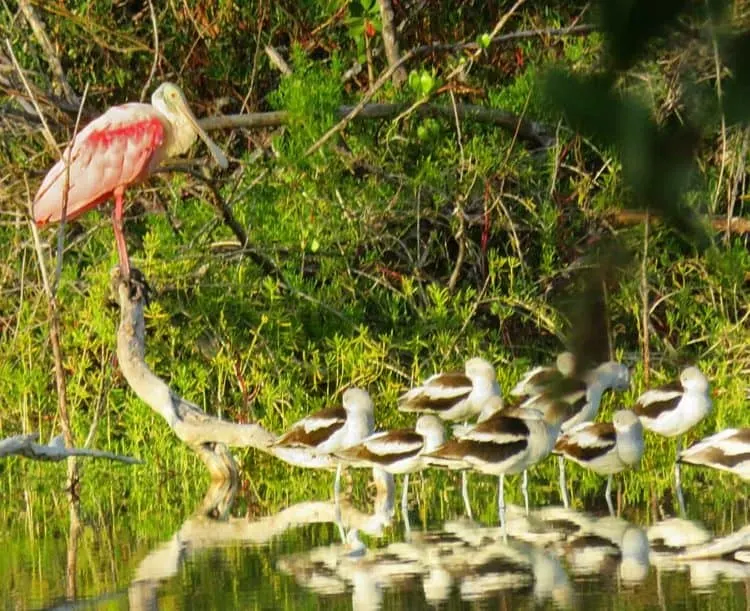
Once a remote fishing village, Flamingo is located at the end of the Florida peninsula and beyond it are the shallow waters of Florida Bay, full of birds, crocodiles, manatees, sharks, fish, dolphins and dozens of uninhabited mangrove islands.
When you visit Flamingo, you have an excellent chance of seeing a number of fascinating species.
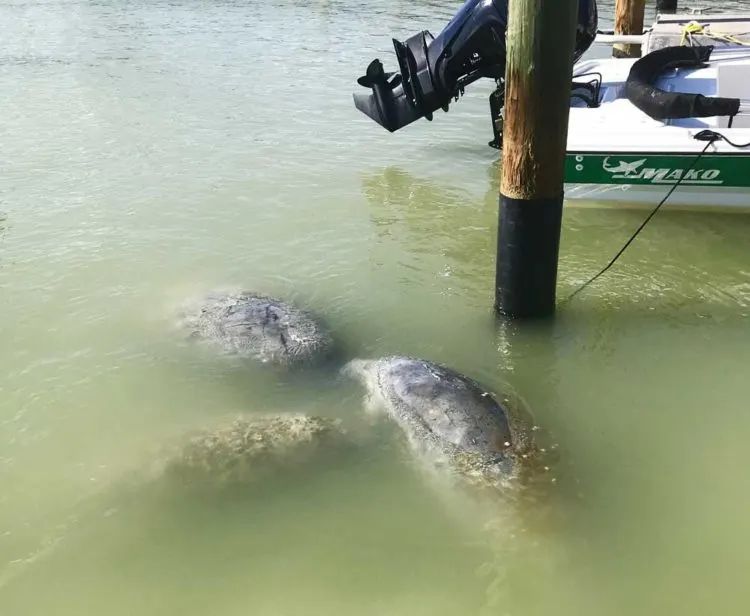
The Flamingo Marina itself is a reliably good place to see manatees. On winter visits over five or six years, we have always spotted manatees bobbing in the marina each day, visible on and off. (The Florida Bay tour boat, which leaves from the marina, starts its narration by explaining that there is a resident population of manatees here, all descendents of a single manatee mama.)
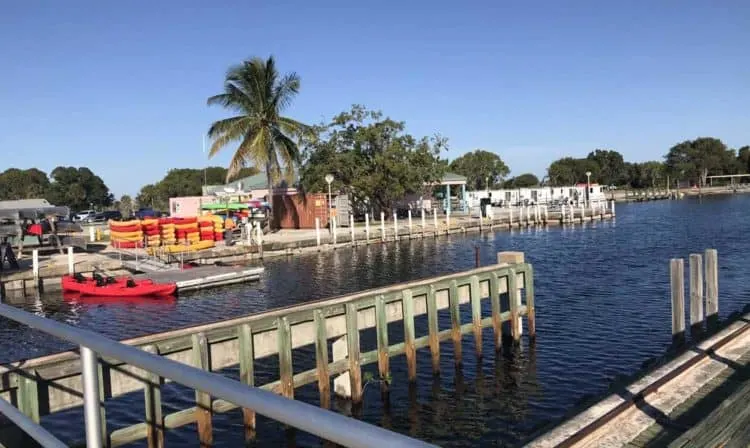
Crocodiles, the salt-water cousins of the more commonly seen Everglades alligator, enjoy the marina area too. A couple of crocs hang out along the shore of the Buttonwood Canal, which is the body of water where the marina is located. It’s not uncommon to see a croc sprawled out on the boat ramp, resting in the sun with his mouth agape.
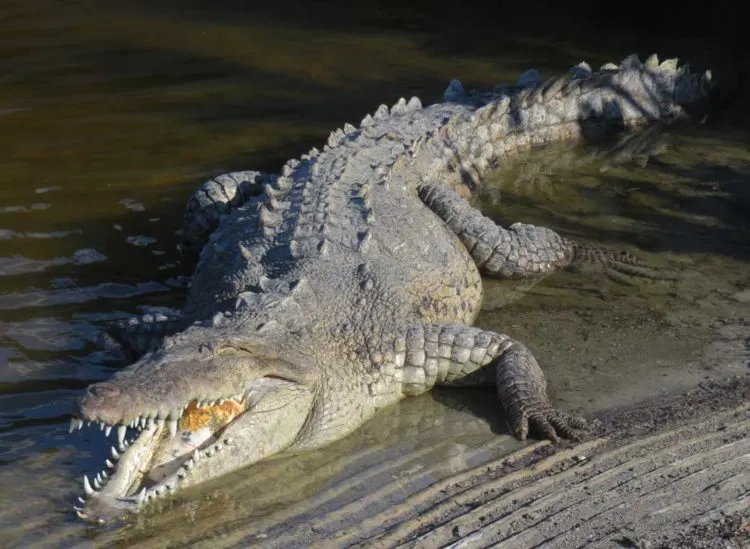
You don’t have to be an expert birder to spot an osprey, either. For several years now, ospreys have built a big messy nest right in the middle of the busy marina (where the bridge/dam on the Buttonwood Canal is located.)
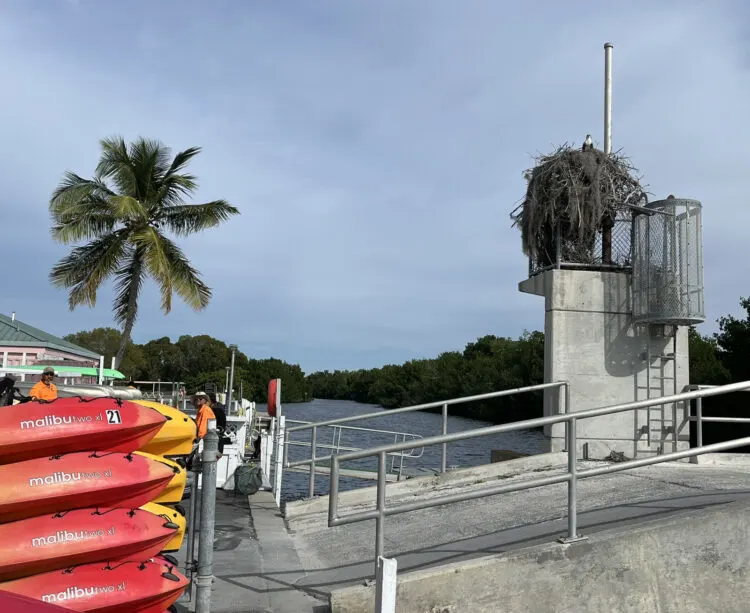
In December, two osprey adults were occupying the nest and in spring when we have visited, we could see and hear their recently hatched chicks.
One mile west of the marina, the small body of water called Eco Pond, directly across the road from the campground, can be an excellent birding location in winter.
One year in November, there were a half dozen of my favorite – the vivid pink roseate spoonbill – in residence, along with wood storks, big beautiful white pelicans and a variety of other herons, egrets and other birds.
On visits in January 2022, January 2023 and December 2023, the Eco Pond had no birds at all. That’s the way it is — you see birds that find great conditions one day and then they may move elsewhere the next.
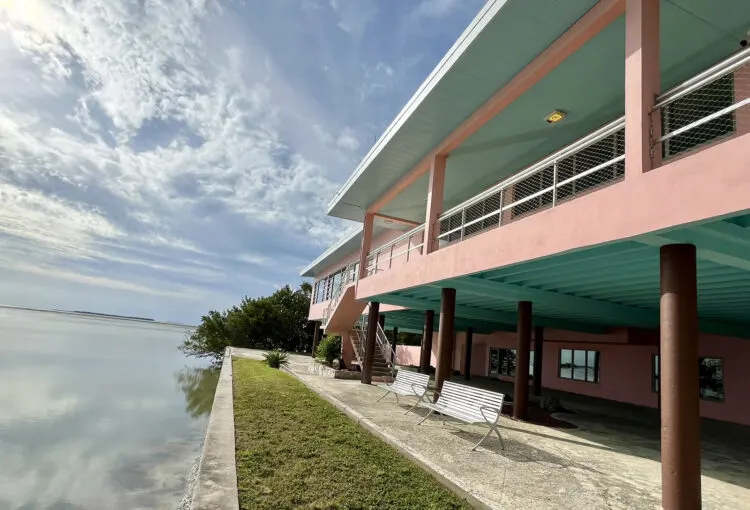
The new visitor center at Flamingo is fabulous
Re-opened just in time for the 2024 season is the beautifully restored 1957 pink Guy Bradley Visitor Center. The excellent exhibits help you understand and appreciate the animals and ecology of the Everglades, with a focus on things you commonly see in Flamingo.
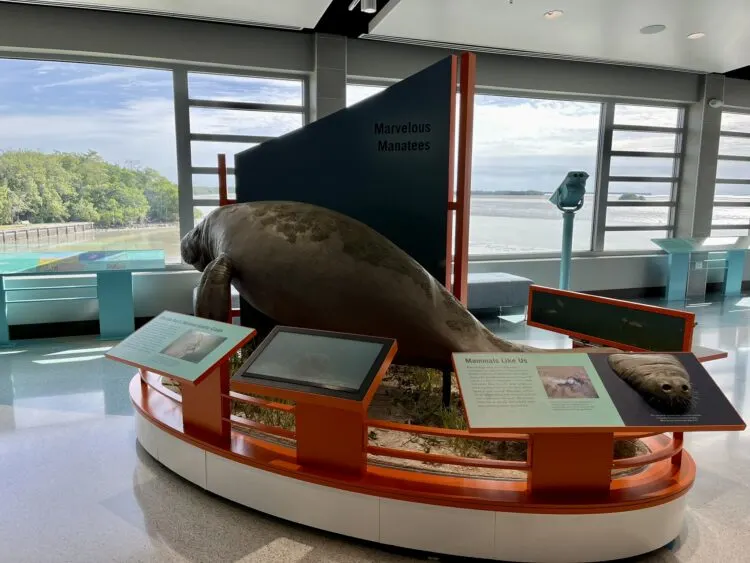
The best part are the huge picture windows overlooking Florida Bay. Try to visit at low tide because the mud flats visible from here fill up with all sorts of birds and the free high-powered binoculars make it easy to view them.
We were lucky enough to see perhaps the rarest bird in Flamingo — an American flamingo, one of two dozen that blew in on Hurricane Idalia and spent the fall of 2023 hanging around Flamingo. A flamingo had never been viewed from the visitor center before, the rangers said.
On our December visit, we returned to the visitor center three times in two days because each time we saw different birds and a different sky from those windows. You could just hang out there and have a great time. The volunteers are quick to point out things you’re seeing. “Is that a crocodile out there?” one asked. Yup, it was.
The Visitor Center is also the place to find out about free ranger programs. Some highlights for the 2024 year are:
- Every day at 8:30 a.m. a ranger leads a free birding walk at a nearby location where something interesting has been seen.
- At 8:30 a.m., every day but Thursday, a ranger leads a three-hour kayak trip into Florida Bay. It’s free and kayaks are provided.
- Here’s the schedule of Flamingo ranger programs offered Dec. 15, 2023 to March 31, 2024
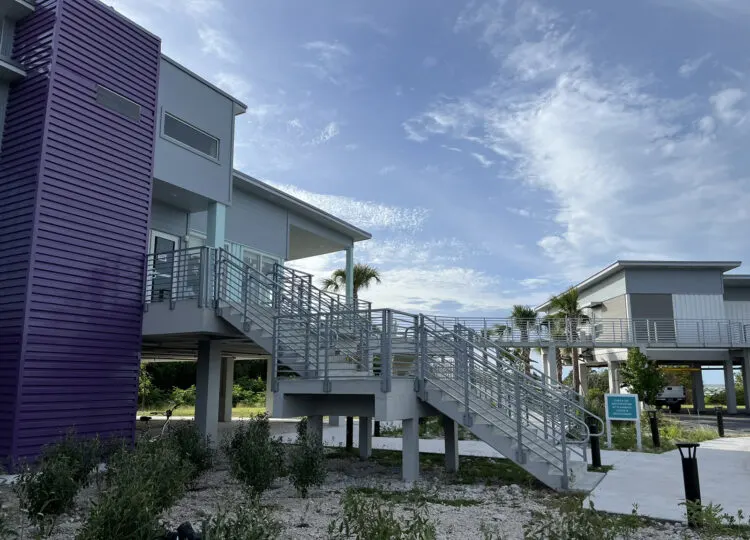
The new lodge at Flamingo in Everglades National Park
I have lived in Florida long enough to remember – and to have stayed in! – the old lodge at Flamingo, destroyed by Hurricane Wilma in 2005. Finally, in fall 2023, a new lodge opened.
The Flamingo Lodge has four buildings with 24 rooms which are a mix of studio, one-bedroom, and two-bedroom units, all featuring kitchenettes, balconies, and fabulous views of Florida Bay.
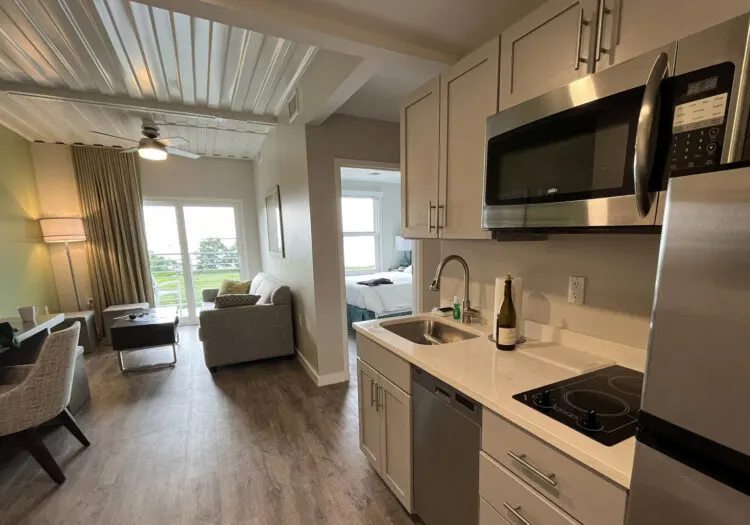
These buildings and a new restaurant are constructed of repurposed shipping containers on stilts, all designed with hurricanes in mind.
The lodge is located between the visitor center and the campground. It’s not cheap; national parks never are. Rates begin at $159 for the studio in the “low season” in summer and $259 in the winter. In winter there is a two-night minimum.
Here’s where to make reservations. The lodge is located between the visitor center and the campground.
The hotel complex includes a restaurant, opening in late December. It will be open 7 a.m. to 10 a.m. and 11 a.m. to 9 p.m. to guests as well as the public and will serve breakfast, lunch and dinner. Its menu ranges from big fruity smoothies to sandwiches, wraps, burgers, empanadas and kid’s choices. It has outdoor seating overlooking Florida Bay. There will be a full bar.
Other accommodations at Flamingo
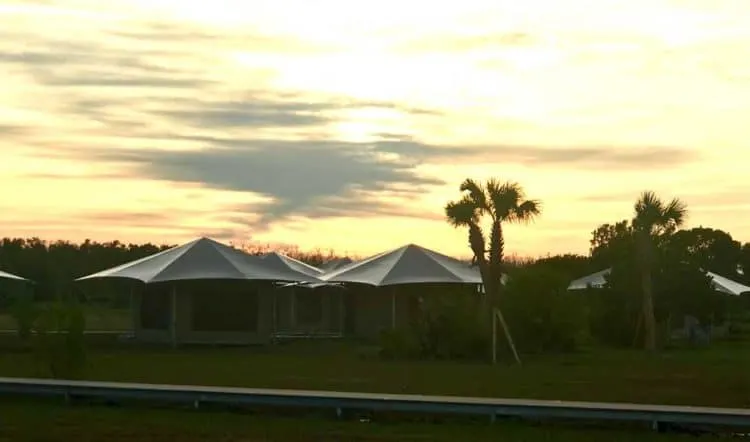
Since a new concessionaires arrived in 2019, Flamingo has added:
- Staying on a houseboat, either on the dock ($350/night) or in White Water Bay ($400/night). Here’s my report. (Sneak peek: It’s expensive, but I loved it): A houseboat adventure in Everglades National Park
- Staying in an “eco-tent” adjacent to the Flamingo campground, a canvas cabin-like tent on a platform with comfortable beds, linens, electricity and a fan (starting at $95/night.) Here’s our review of the eco-tents after two separate stays. You can stay in an eco-tent without having any camping gear.
Of course, there has always been camping, either in your RV or in a tent. Here’s a comprehensive story on camping in the Everglades from Florida Rambler.
Here’s information on reserving all Flamingo camping, boating and accommodations.
The next closest lodging is in Homestead, a little more than an hour away.
Things to do in Flamingo
The area has a few hiking trails (I’ll cover them shortly) but a ranger in the Flamingo Visitor Center gave the best advice when he told us: “If you want to experience this place, be in a boat.”
Boat tours from Flamingo
The Flamingo Marina offers several boat tours – one into the Florida Bay, one up the Buttonwood Canal through Coot Bay and Tarpon Creek into the Whitewater Bay. Details on boat trips are here.
TripAdvisor reviews range from raves to yawns. If you are unfamiliar with the Everglades, you’ll learn a lot. The naturalist narrators will provide lots of useful information and identify the wildlife you are likely to see from the boats. (I saw the tour boat recently making sure everybody got a chance to spot manatees and crocodiles before even heading into Florida Bay.)
An additional experience available is an all-day small (six people max) boat trip along Florida Bay to the wild Cape Sable coast offered by the Everglades National Park Institute. This is an expensive outing ($219 per person) that takes you in a wilderness area. For more about the Cape Sable area, see below.
Kayaking or canoeing on your own from Flamingo
My preference is to get out there and paddle to experience the area up close. You can explore both the freshwater and the saltwater environment in Flamingo via your own kayak or by renting one at Flamingo. Details on rentals here. (Don’t forget about the daily free ranger-led kayak outings, about which you can inquire at the visitor center.)
The most common kayak outing at Flamingo is to paddle up the Buttonwood Canal, where you are likely to see crocodiles, a variety of birds and a pretty mangrove shoreline. We paddled the Buttonwood Canal recently because Florida Bay was too windy.
If you are lucky enough to spend time in Flamingo, I hope it is when the winds are light so you can paddle in Florida Bay. The waves and weather on Florida Bay can get serious enough to make it unsafe for paddlers, so it is important to check the forecast when making plans.
If bay waters are smooth, I recommend exploring the shoreline both east and west of the Flamingo marina.
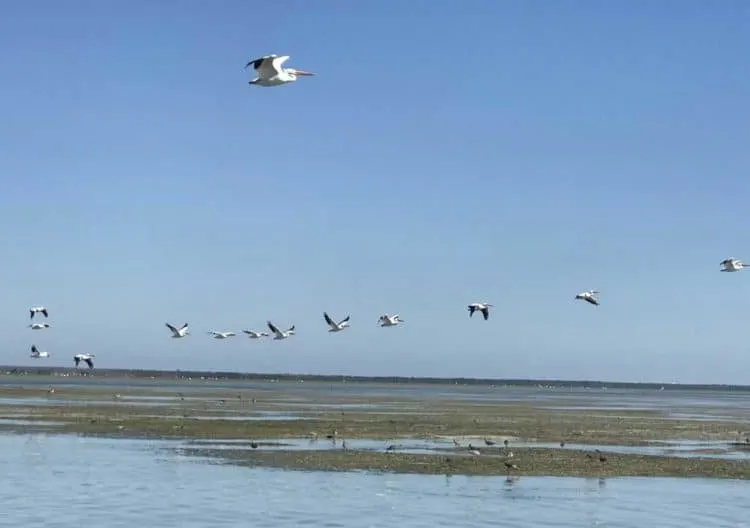
Paddling west from Flamingo in Florida Bay
If you paddle west (you’d make a right turn when you reach Florida Bay), you are kayaking along the shore of what was the original fishing village of Flamingo. Watch for pilings in the water, some of its last traces. In its heyday (1890s to 1920s), Flamingo was a series of shacks built on stilts along the coast between present-day Flamingo and Cape Sable.
About a mile from Flamingo, you will come to an island close to shore, Bradley Key. This is the only nearby island in Florida Bay that you are allowed to land on. If you kayak around Bradley Key, you will find a landing beach on the opposite site, where you can stop and picnic.
We loved our canoe trip to Bradley Key in January 2022. We packed a picnic and had perfect weather. With low tide, the mainland shoreline along our route was filled with a variety of shore birds.
When we reached Bradley Key, however, we saw the downside to low tide. The island has a small sandy beach. But at low tide, you can’t reach it; it is edged with 40 feet of shoe-sucking mud that must be crossed. This was comical — we sank to our mid-calf in mud; it was like trudging through quick sand.
On the beach, though, it was just us in a beautiful wild spot as we dined and waited for the tide to come up enough to float us out.
Paddling to Cape Sable for wilderness camping
If you continue paddling along the coast toward Cape Sable, you pass along the shores of a coastal prairie that has a year-around wetland home to hundreds of crocodiles.
The most adventurous campers paddle along this shore all the way to the beaches of Cape Sable on the Gulf Coast, where camping is permitted. Here’s our report on a canoe-camping trip from Flamingo to Cape Sable. (We loved it so much.)
Before you go, you must acquire a back-country permit at the Flamingo ranger station. While some back-country camping locations have a limited number of permits, there are many permits for beach camping along Cape Sable, so it’s generally possible to obtain a permit for these on the morning of your departure, according to the National Park Service website.
Allow four to six hours to reach East Cape Sable, 11 miles away.
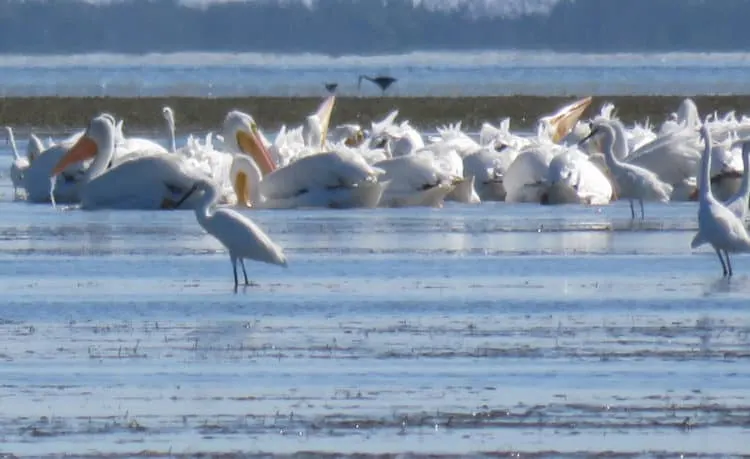
Paddling east from Flamingo in Florida Bay
If you turn left at the marina, you’ll be entering a shallow area that turns to mud flats in low tides. If you stay close to the shore, however, you should have enough water to paddle, and you also improve your chances of observing wildlife. (We saw a crocodile and numerous varieties of birds in the mangroves along the shore.)
As you paddle along the shore, you’ll come to Christian Point, where you have a choice. You can take a left turn around Christian Point and continue close to the shore and perhaps see birds in the extensive mud flats that will be on your right. (I know it’s counter-intuitive that there is deeper water along the shore; it’s a tip from a ranger who says it was dredged.)
Your second option is to paddle out to the marked boating channel beyond the closest mud flats and further out into Snake Bight. (A bight is a small bay within a bay; “Snake Bight” was probably some map maker’s clever word play.)
The first year we explored Snake Bight, it was via the outer boat channel.
We saw thousands of birds here – many white pelicans, at least a dozen roseate spoonbills, and flocks of a great variety of herons, egrets and other birds. It was spectacular – the sort of scene for which the Everglades is famous.
Unfortunately for us, we did not time our paddling trip to the tides and faced a surprisingly strong outgoing tide the whole way into Snake Bight. It was an exhausting slog, and then the return trip was into the wind.
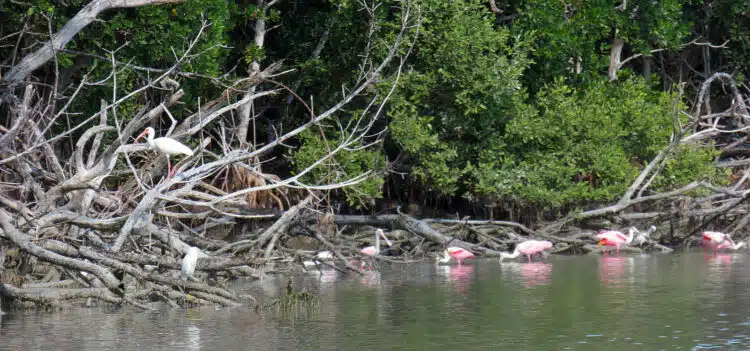
We loved the bountiful bird life so much, however, we returned in January 2023 and tried the second option — paddling along the shore just beyond Christian Point.
THIS was terrific. We started two or three hours before low tide, so on the way out, we were paddling against a current, but it wasn’t bad. After Christian Point, the mud flats were to our right and ahead and they were filled with spectacular wildlife — two dozen roseate spoonbills, an equal number of white pelicans, dozens of brown pelicans splashing repeatedly and noisily into the water as they hunted, thousands of other birds, and even two sharks cruising the underwater seafood banquet.
Before the tide got to its lowest, we headed back to Flamingo, this time with the current helping us. At times we were paddling in water so shallow we had only inches to spare; we were always checking where the deepest water near us might be.
We passed a few fishermen (the area is known for excellent fishing, as the wildlife also knows.) But largely, when you paddle into Snake Bight, you see little evidence of man. It’s just you and the solitude and wildlife of Florida Bay.
Nearby inland kayak trails
Other options for kayakers include several kayak trails:
- Nine Mile Pond is the nearby trail I recommend. It’s a marked trail through mangroves and shallow lagoons, where a 14-foot crocodile is king of the pond. You can arrange to kayak here via the Flamingo marina operation. You also can arrange a guided kayak tour here by the Everglades National Park Institute.
- A challenging, twisty trail through the mangroves, Hell’s Bay Trail is sheltered, so it’s good for windy days. Here’s a Florida Rambler report on Hell’s Bay Trail.
- A shorter version of Hell’s Bay is across the road, Noble Hammock: a 1.9 mile loop through a maze of mangrove tunnels and small ponds. It’s a good choice for windy days when you can’t go out in the bay. You’d never be able to follow this trail without the more than 120 numbered PVC pipes that mark the trail. Spotting the next PVC pipe is part of the fun. Some report seeing wildlife on this trail; our only sighting was spiders in the mangrove tunnels.
- Mud Lake Canoe Trail travels through mangrove tunnels and lakes. Here’s a Florida Rambler story on the Mud Lake Canoe Trail.
- The 8.1 mile-long West Lake Trail hugs the shore of a large open lake (not a good choice for a windy day) and through back-country Alligator Creek to a wilderness chickee camp site (wilderness permit required.) We’ve paddled West Lake and seen little wildlife. However, when you get to Alligator Creek, I am told the trail gets better.
- Small motorboats (up to 6 HP) are permitted on West Lake itself, although they are not permitted to leave the lake. The West Lake parking lot has a public-access boat ramp, a dock and restrooms.
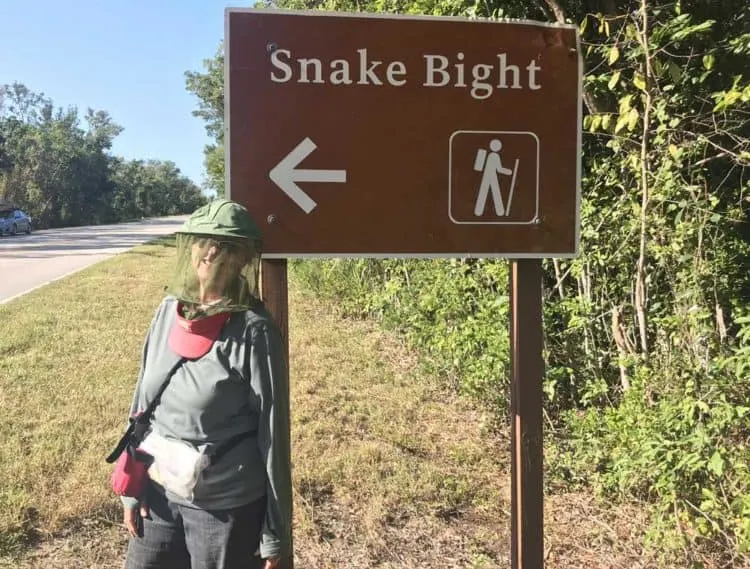
Hiking near Flamingo
I have long looked for good hiking trails in Everglades National Park and this time, a ranger explained to me why I haven’t found many: It’s a swamp. Of course. This really isn’t hiking country.
(And I know “swamp” is not an entirely accurate term; the Everglades is a slow-moving river.)
Two shorter trails – the two-mile Bayshore Loop Trail and the one-mile Guy Bradley Trail – are located essentially within the Flamingo Marina/Campground complex and are definitely worth taking. (You can get a copy of the trail map at the visitor center.)
West Lake, seven miles north of Flamingo, has an interesting half-mile boardwalk trail through mangroves to an overlook at the lake, where you see the remnants of trees damaged by Hurricane Irma in 2017. (Irma destroyed the boardwalk, too, which was rebuilt, re-opening in 2022.)
As I reviewed longer hiking options near Flamingo, it seemed like a process of elimination: Coastal Prairie Trail “several feet of water on the trail;” Christian Point “challenging, with shoe-sucking mud;” Snake Bight Trail “worst mosquitos in the park.”
Our helpful ranger said the only trails that aren’t too wet (in November and probably always) are those built on old raised roadbeds – Bear Lake Trail and Snake Bight Trail. Both can have fierce mosquitos, so be prepared.
The Bear Lake Trail is maintained, although the 1.5 mile dirt road to the trailhead is incredibly rutted and pothole-filled. Once on the Bear Lake Trail, you get regular glimpses of the canal along its side and at lower water levels, this can be a good place to see birds and gators. In the wet January of 2022, we did not see any. I had walked here in the past, but in December 2023, I experienced the worst mosquitos I can remember anywhere and I didn’t last two minutes on the Bear Lake Trail. So it depends!
The trail ends at a small open portion of the shoreline at Bear Lake, where people fish or just enjoy the view.
The Snake Bight Trail: We had once tried to hike Snake Bight Trail and turned back – the mosquitos won.
This time, the ranger told us, the mosquitos weren’t bad. No, it was a rattlesnake that had prompted hikers to turn back this week, he said. Apparently an Eastern Diamondback Rattlesnake had stretched himself across the trail and wasn’t slithering away.
Considering ourselves forewarned, we equipped ourselves with long sleeves, pants and mosquito-netting hats, kept a vigilant eye for snakes and set out to master the Snake Bight Trail.
Our verdict: No rattlesnakes and, somehow, virtually no mosquitos!
At the end of the 1.8 mile trail, you reach Snake Bight, the section of Florida Bay into which we had paddled the previous day. There is a very nice short boardwalk there with a lovely view of Snake Bight. At high tide, you might have good birding here. (We saw just a few at low tide as the birds were spread out across the bight.)
The Snake Bight trail can be ridden on fat-tire bikes.
Here’s a PDF of the hiking trail map for the Flamingo area.
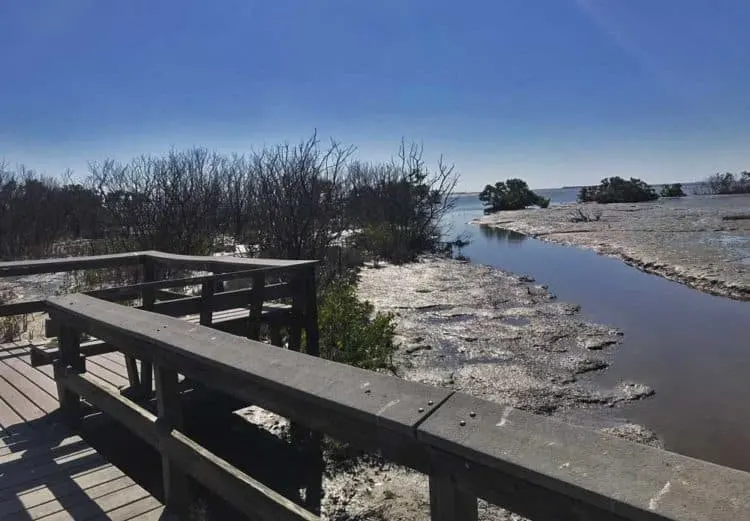
Planning your visit to the Everglades:
- Florida Ramber insider tips for visiting Everglades National Park.
- Admission to Everglades National Park and is $35 per car with a pass good for seven days. As soon as you turn 62, get a senior pass. For $80, it offers lifetime admission to all national parks. Also: Take advantage of these free days in national parks.
- Do not rely on cell phones for critical communication while visiting the park. This is a large wilderness area and most cell phones won’t have service, even along the main roads. AT&T has a tower at Flamingo and park workers say service is good. (We found we had cell phone service 11 miles away at East Cape Sable.)
- The Everglades National Park website
- Map of Flamingo campground, including eco-tents.
- Map of kayak trails near Flamingo
- Camping reservations in Everglades National Park
- The Anhinga Trail
- Shark Valley entrance, with its 15 mile trail and trams ride
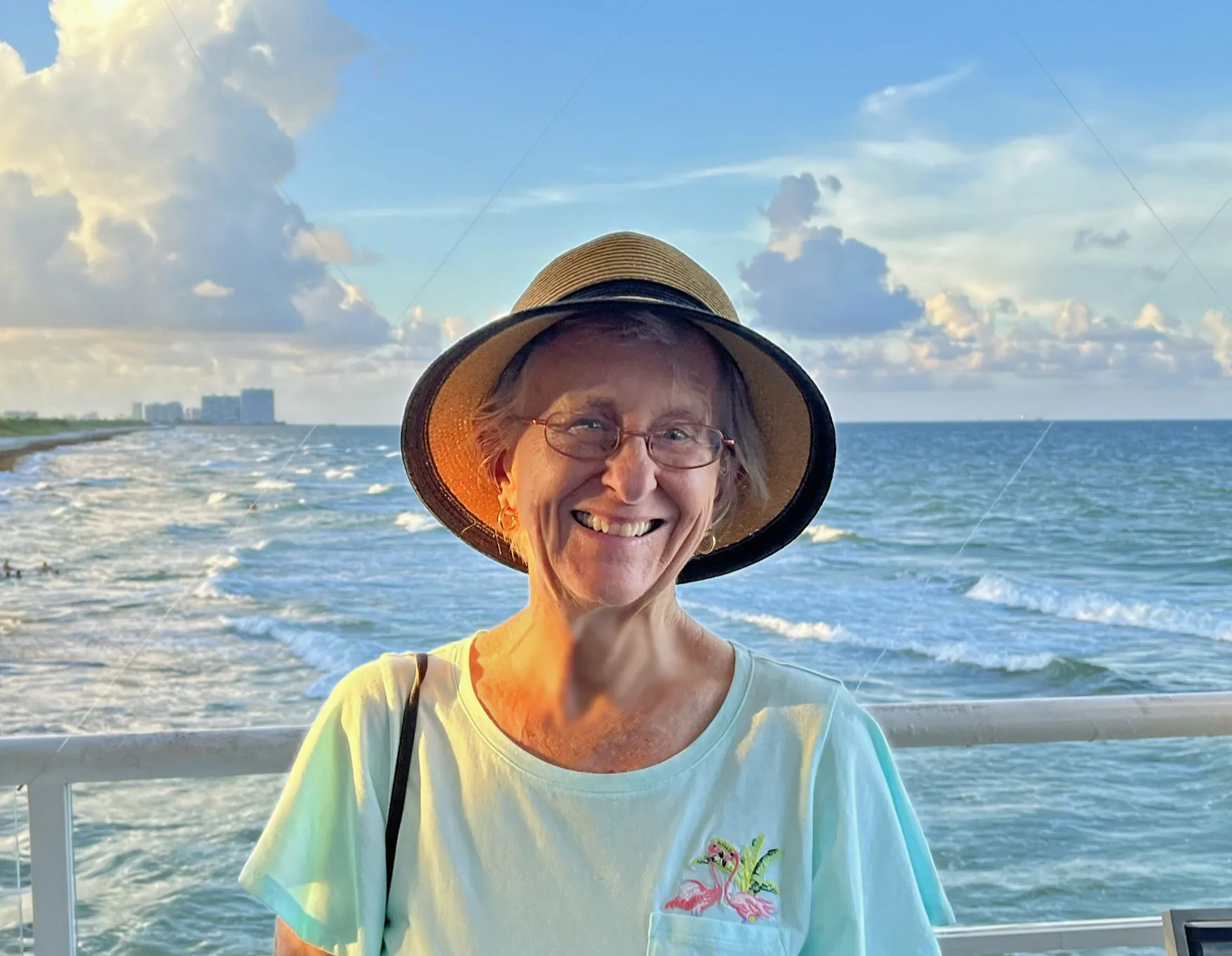
The author, Bonnie Gross, travels with her husband David Blasco, discovering off-the-beaten path places to hike, kayak, bike, swim and explore. Florida Rambler was founded in 2010 by Bonnie and fellow journalist Bob Rountree, two long-time Florida residents who have spent decades exploring the Florida outdoors. Their articles have been published in the Sun Sentinel, the Miami Herald, the Orlando Sentinel, The Guardian and Visit Florida.

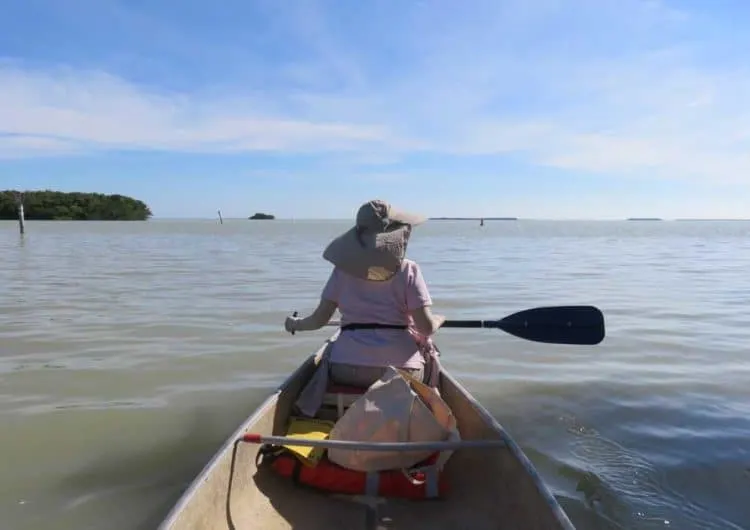
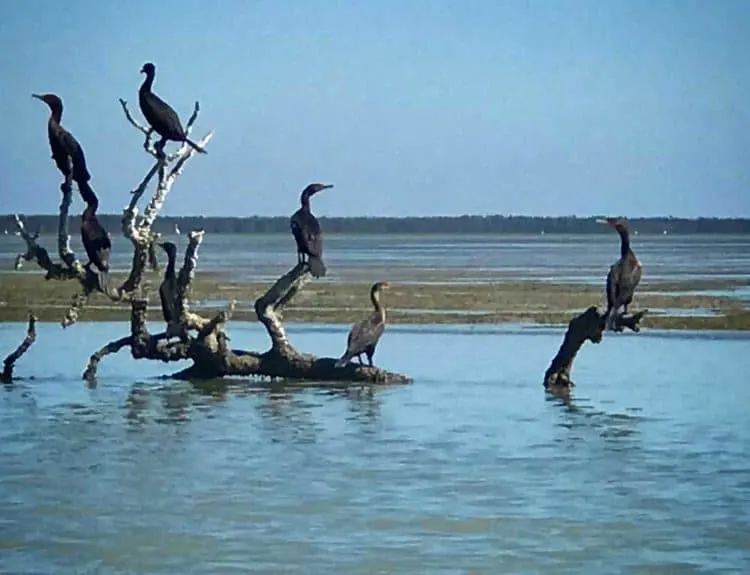
Fred K Brattåker
Sunday 3rd of April 2022
I love your reviews :) I stayed in the eco-tents at Flamingo about a week ago .. maybe two weeks ago now, and they were really nice. It was late March, so about as dry as the culmination of the dry season can get it, but those spring winds kept the bugs at bay. Eco Pond was empty the morning I went to check it out (though I did find two dead birds .. not quite what I was looking for, but interesting anyway). Christian Point was actually not wet at all, but I really couldn't find the trail, once it got out of the trees. It had a raised boardwalk type entry, so you can tell it often is pretty flooded, but it was being crossed by some downed trees at the moment - they were passable, not really much of a hindrance, but people should be careful. The footpath that follows is narrow and sometimes short with crossing limbs and even other trees, but I kinda like that .. makes it feel like you're entering a secret place. Once it opened up though, I couldn't find any trail guides. There was a worn down path imprinted in the dry bed, so I followed it a bit, but eventually that disappeared. I was finding my own steps were not heavy or focused enough to be able to leave any prints on the sponginess of the surface there - which was cool, but also meant that I was out of leads to guide me. It smelled like .. pelicans, but was empty and quiet other than the scurrying little louse critters, a red shoulder hawk, and an osprey. Unfortunately, I never found where the trail picked up again on the other side of this open area, and headed down to the waterside, so I just went back. Still cool to see it though.
Oh! And Snake Bight Trail was clear. After CP not getting me anywhere, I went to check it out, and was delighted that it allows bikes, because I was hoping to get to the water before sunset. It was a perfectly fine, straight, pretty wide trail with no obstacles - fantastic, because I was able to move faster. You could tell it was a recent improvement - there were still thick limbs and stumps left on the sides. I didn't go on it, but at the intersection with Rowdy Bend Trail, it seemed to be showing the same signs of being recently maintained - I'll have to check it out next time. At the end, there was a silty-slick mud puddle right before that boardwalk, which almost caused me to wipe out, but otherwise, dry and clear. I ended up spending too much time enjoying the sunset though, and on the return trip, I realized I hadn't put my headlight back on my bike after charging. I rode back in the deepening dusk, and even though I have pretty good night vision (I spend a lot of time in the dark), I could mostly only see the white spaces of sand on the trail. But that's how well they cleared that trail up! I could ride it fast as my feet could manage in the dark without a light.
I love how the trail experiences can be so different, depending on when you go. I can send you pictures to compare if you'd like.
Bonnie Gross
Sunday 3rd of April 2022
What an awesome trip report! I am sure the readers here will appreciate it, especially the recent impovements to Snake Bight Trail.
John
Wednesday 26th of January 2022
very helpful, coming from europe in this country I just want to explore it and photographing the best places posible
Kristi L Link
Tuesday 9th of March 2021
The Everglades is not a 'swamp'...It's a slow moving river. Florida Bay has "salted and muddied up" due to the last hurricane.